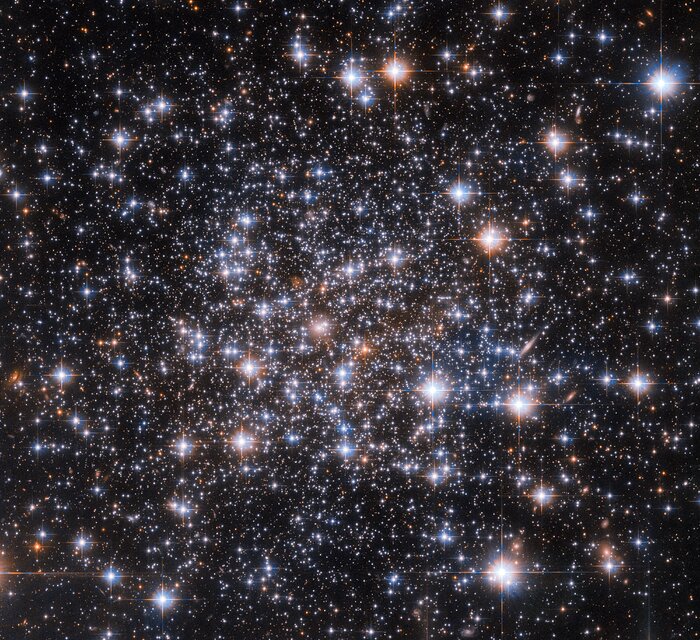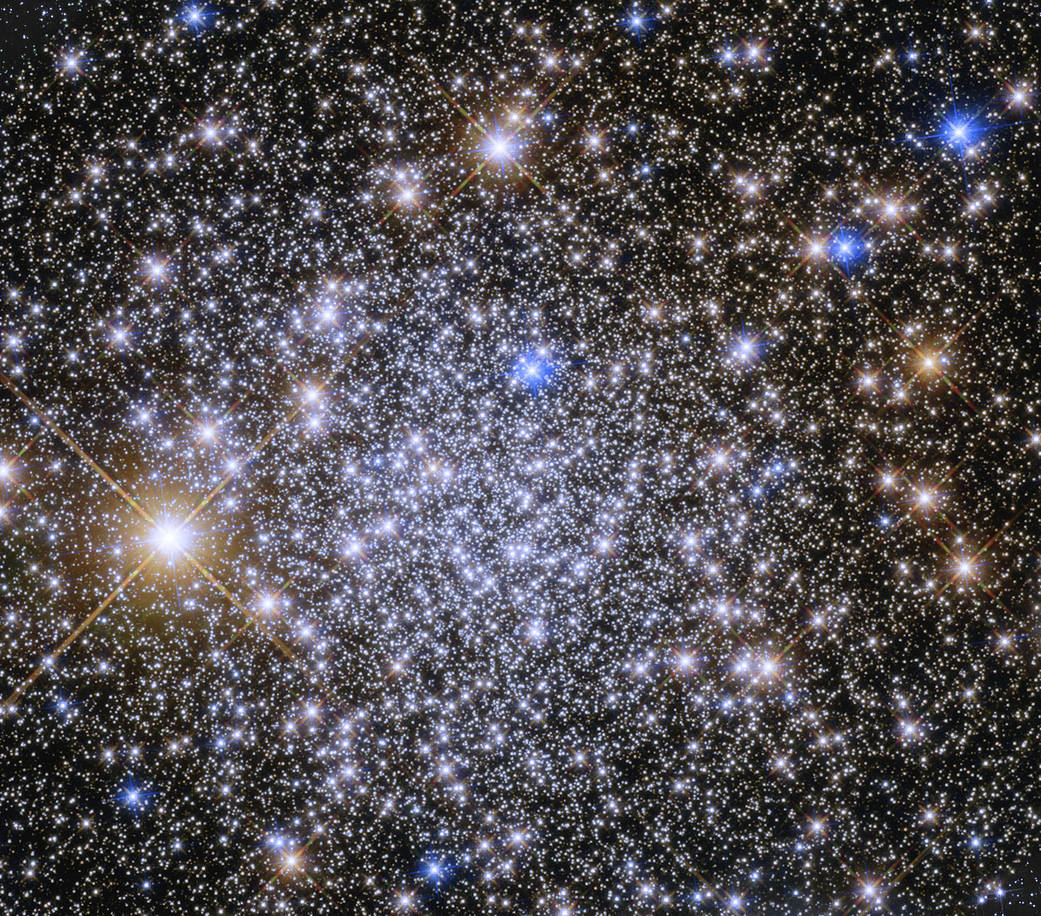If you like shiny things, some of the most gorgeous objects in space are globular clusters, with their bright, densely packed collections of gleaming stars. And if you like globular clusters, you’re in luck: two different Hubble images of globular clusters were featured this week by NASA and ESA.
The Hubble telescope basically revolutionized the study of globular clusters, as with ground-based telescopes, it is almost impossible to distinguish the individual stars in globular clusters because they are so densely packed. Hubble been used to study what kind of stars globular clusters are made up of, how they evolve and the role of gravity in these dense systems.
The first image from Hubble, featured by NASA, is this beautiful glittering gathering of stars (above) called Pismis 26, a globular star cluster located about 23,000 light-years away. The cluster is named for Armenian astronomer Paris Pismis who first discovered the cluster in 1959 at the Tonantzintla Observatory in Mexico; and this cluster has the dual name Tonantzintla 2.
Usually, globular clusters consist of stars that are quite old (red and dead), with some of the oldest stars in the Universe. In fact, our resident astrophysicist, Paul Sutter has called globular clusters the “retirement homes for the galaxy.”
Astronomers estimate the age of this particular cluster to be 12 billion years old.
The stars in globular clusters are held together by mutual gravitational attraction. Globular clusters cover a relatively small region in space, with most no more than a couple dozen parsecs across. But each one contains hundreds of thousands, and sometimes millions, of stars. Sutter says that puts the average distance between stars at about 1 light-year, but in their cores the stars pack together over a thousand times more tightly than in our own neighborhood.

The second globular cluster image, this one featured by ESA, shows Ruprecht 106. Hubble captured this star-studded image with the Advanced Camera for Surveys (ACS), which was installed on the space telescope by astronauts during a servicing mission in 2002.
Ruprecht 106 contains a bit of a mystery. Even though most of the constituent stars in globular clusters stars likely formed at approximately the same time and location, research with Hubble has shown that is not always true. It turns out that almost all globular clusters contain groups of stars with distinct chemical compositions, which means those groups of stars within the clusters have very slightly different ages or compositions from the rest of the cluster.
However, a handful of globular clusters do not possess these multiple populations of stars, and Ruprecht 106 is a member of that group. Astronomers will likely use the James Webb Space Telescope to study enigmatic clusters like Ruprecht 106 to learn more about the stars and their life cycles.

